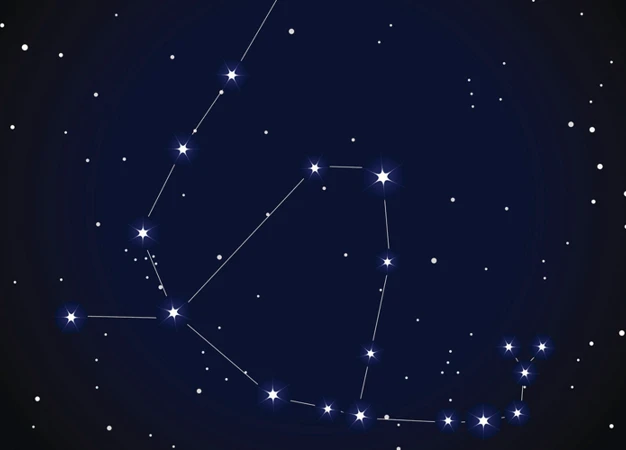The Ophiuchus constellation has intrigued astronomers, historians, and astrologers for centuries. With its unique position in the night sky and fascinating mythological origins, Ophiuchus holds both historical significance and cultural importance. From its association with the Serpent Bearer in Greek mythology to its controversial addition to the zodiac, Ophiuchus continues to captivate the imagination of people around the world. In this article, we will explore the legends and mythology surrounding Ophiuchus, delve into its astronomical aspects, examine its impact on astrology, discuss its cultural significance, and explore the scientific exploration and misconceptions surrounding this enigmatic constellation. So, let us embark on a celestial journey and uncover the hidden secrets of the Ophiuchus constellation.
The Legends and Mythology
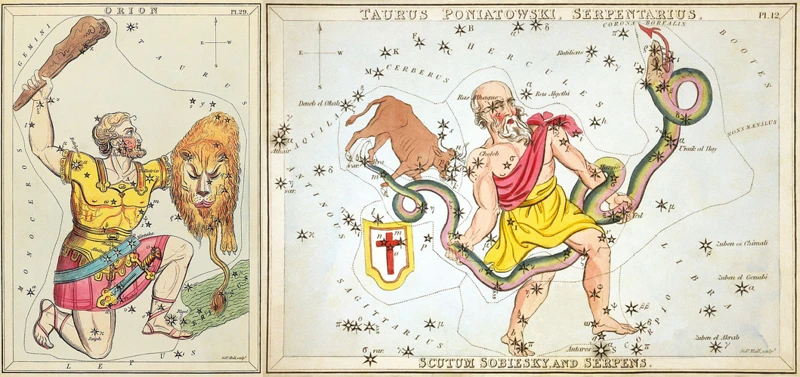
The Legends and Mythology surrounding the Ophiuchus constellation are filled with rich folklore and ancient tales. This celestial figure has a long history of mythological origins that have been passed down through generations. According to one account, Ophiuchus is associated with the Greek myth of Asclepius, the ancient god of medicine and healing. Asclepius was said to possess great healing powers and was even able to resurrect the dead. This led to the envy of the gods, who feared that mortals would become immortal under his care. As a punishment, Zeus struck Asclepius down with a lightning bolt, but later honored him by placing his image among the stars as the constellation Ophiuchus. Another mythological connection is found in the story of Apollo’s son, Phaeton, who attempted to drive his father’s sun chariot but lost control, causing chaos and devastation on Earth. To restore order, Zeus sent a scorpion to kill Phaeton, but the scorpion itself was later placed among the stars as the constellation Scorpius, while Ophiuchus stands nearby, forever engaged in a struggle with the scorpion. These captivating tales of ancient mythology highlight the significance of Ophiuchus in the celestial narrative and contribute to its enduring allure. To explore more about the folklore and legends associated with the Ophiuchus constellation, click here: Exploring the Ophiuchus Constellation: Folklore and Legends.
1.1 Mythological Origins
The mythological origins of the Ophiuchus constellation are rooted in various ancient cultures and traditions. In addition to its association with the Greek god of healing, Asclepius, Ophiuchus also finds parallels in other mythologies. In Egyptian mythology, it is believed to represent Imhotep, the ancient physician and architect. Imhotep was revered for his knowledge and healing abilities, much like the Greek Asclepius. Additionally, in Babylonian astronomy, Ophiuchus was linked to the figure known as the “Serpent Bearer,” who was seen as a healer and depicted holding a snake. This connection between Ophiuchus and healing is a recurrent theme across different mythologies, emphasizing the constellation’s significance in ancient beliefs about medicine and spirituality. To explore more about the cultural impact of Ophiuchus in astrology and its ties to modern pop culture, click here: Ophiuchus: Zodiac and Cultural Impact.
1.2 The Serpent Bearer
The Serpent Bearer is a prominent aspect of the Ophiuchus constellation’s mythology, symbolizing the figure’s connection with snakes. In Greek mythology, it is believed that Ophiuchus is associated with the physician-god Asclepius, who possessed the ability to heal through the use of serpents. As a result, Ophiuchus is often depicted as holding a snake, representing wisdom, healing, and transformation. This symbolism resonates across different cultures and has a profound impact on the interpretation and representation of the constellation. In modern pop culture, Ophiuchus and its association with the Serpent Bearer have become a source of inspiration. From artwork and sculptures to tattoos and jewelry, the image of Ophiuchus holding a snake has found its way into various forms of artistic expression. The symbolic significance of Ophiuchus as the Serpent Bearer is a testament to its enduring presence in both ancient mythology and contemporary culture. To explore more about the role of Ophiuchus in modern pop culture, click here: The Role of Ophiuchus in Modern Pop Culture.
Astronomical Aspects
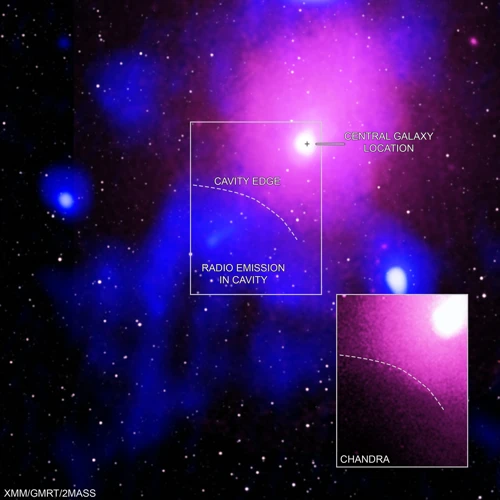
Astronomical Aspects of the Ophiuchus constellation are equally intriguing and fascinating. Ophiuchus, also known as the Serpent Bearer, is located near the celestial equator and can be seen in both the Northern and Southern hemispheres. It is situated between the constellations of Aquila and Serpens, and it takes up about 948 square degrees of the night sky. With its distinctive shape, Ophiuchus is often depicted as a man holding a snake. The constellation consists of several notable stars, including Rasalhague, which is the brightest star in Ophiuchus and marks the head of the Serpent Bearer. There are also several deep-sky objects within Ophiuchus, such as the globular cluster M14 and the beautiful nebula IC 4603. Ophiuchus is particularly prominent during the summer months in the Northern Hemisphere, and it can be easily located using nearby recognizable constellations such as Hercules and Scorpius. Its celestial position and notable features make Ophiuchus a captivating sight for astronomers and stargazers alike, offering a glimpse into the vastness and beauty of the universe.
2.1 The Position and Characteristics
The position and characteristics of the Ophiuchus constellation contribute to its uniqueness and prominence in the night sky. Located near the celestial equator, Ophiuchus is a large constellation that spans an area of approximately 948 square degrees, making it the largest constellation in the zodiac. It is situated between the constellations of Scorpius and Sagittarius, and can be seen in the northern hemisphere during the summer months. Ophiuchus is notable for its bright stars, including Rasalhague (Alpha Ophiuchi) and Sabik (Eta Ophiuchi), which are both binary star systems. Rasalhague, in particular, is one of the brightest stars in the constellation and stands out for its bluish-white hue. Ophiuchus is also home to several deep-sky objects, such as the Ophiuchus Galaxy Cluster, which contains over 200 galaxies and is a subject of extensive astronomical research. The distinct position and characteristics of the Ophiuchus constellation make it a captivating sight for both amateur stargazers and professional astronomers alike.
2.2 Historical Observations
Historical Observations of the Ophiuchus constellation have played a significant role in our understanding of the night sky. Throughout history, astronomers and civilizations have documented their observations and interpretations of this celestial figure. One of the most notable ancient observations can be attributed to the Greek astronomer Ptolemy in the 2nd century AD. In his influential work, the Almagest, Ptolemy listed Ophiuchus as one of the 48 constellations known at the time. However, it is believed that the constellation was recognized and observed even earlier by the Babylonians, who incorporated it into their celestial maps. Over the centuries, Ophiuchus has been observed by various cultures, including the Egyptians, Chinese, and Native Americans, each with their own unique interpretations and mythological associations. These observations and records have not only contributed to our understanding of the constellations but also provided invaluable insights into the historical and cultural significance of Ophiuchus.
Impact on Astrology
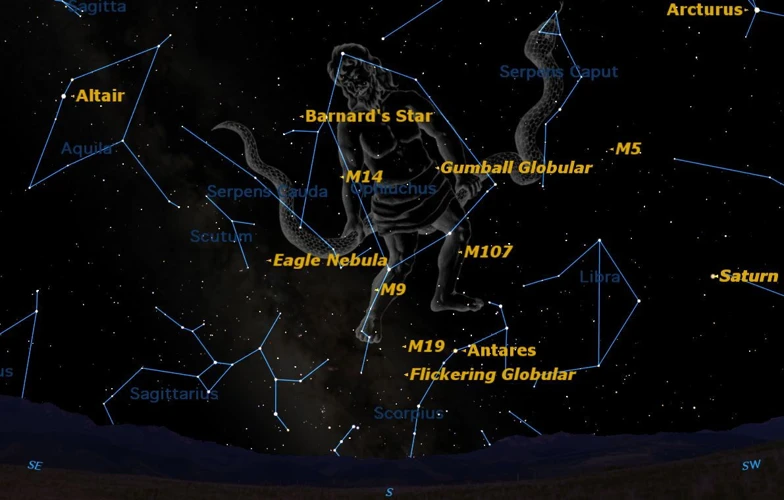
The inclusion of the Ophiuchus constellation in astrology has had a significant impact on the zodiac system. Traditionally, the zodiac was composed of twelve signs, each representing different personality traits and characteristics. However, the discovery and recognition of Ophiuchus as a thirteenth zodiac sign has sparked controversy and debate. Those who advocate for the incorporation of Ophiuchus argue that it adds depth and nuance to astrological interpretations, allowing for more accurate personality readings and predictions. Ophiuchus is associated with traits such as wisdom, healing, and a deep connection with spirituality. Astrologers believe that individuals born under this sign possess a unique set of qualities that can greatly influence their lives. However, critics argue that the addition of Ophiuchus disrupts the established zodiac system and undermines the significance of the traditional twelve signs. Despite the differing opinions, Ophiuchus has found a place in astrology, with enthusiasts embracing its inclusion and exploring its effects on birth charts and horoscopes. To delve deeper into the impact and controversy surrounding Ophiuchus in astrology, click here: Ophiuchus in Astrology: Cultural Impact and Controversy.
3.1 Addition to the Zodiac
The addition of Ophiuchus to the zodiac has been a topic of much debate and controversy in the astrological community. Traditionally, the zodiac consists of twelve signs, each representing a specific period of the year. However, in recent years, there has been a movement to include Ophiuchus as the thirteenth sign. Ophiuchus is said to fall between Scorpio and Sagittarius, occupying a small portion of the ecliptic. The claim for including Ophiuchus comes from the fact that the sun does pass through this constellation during a specific period. Proponents argue that by including Ophiuchus, it adds depth and complexity to the astrological system. Those born under this sign are believed to possess qualities such as healing abilities, wisdom, and a powerful intuition. While the addition of Ophiuchus may offer new perspectives and interpretations for astrologers, it has also faced criticism from those who argue that altering the traditional zodiac would disrupt established astrological charts and predictions. The controversy surrounding the addition of Ophiuchus to the zodiac reflects the ongoing evolution and reinterpretation of astrology in the modern world.
3.2 Personality Traits and Interpretations
When it comes to the personality traits and interpretations associated with the Ophiuchus constellation, there is a wide range of speculation and differing opinions. As an astrological addition, Ophiuchus represents those born between November 29 and December 17. These individuals are believed to possess unique characteristics that set them apart from other zodiac signs. Some astrologers describe Ophiuchus traits as creative, intuitive, and wise, with a natural inclination towards healing and transformation. Others associate them with traits such as resourcefulness, determination, and a magnetic personality. Ophiuchus individuals are often seen as natural leaders and are believed to have deep spiritual insights. They are thought to possess great empathy and the ability to connect with others on a profound level. However, it is important to note that the inclusion of Ophiuchus in the zodiac is not universally accepted or recognized by all astrologers, and its interpretations can vary greatly. So, while some may find resonance with the traits associated with Ophiuchus, others may not relate to them at all. It is always best to approach astrology with an open mind and consider individual experiences and circumstances.
Cultural Significance

Cultural Significance:
1.1 Ophiuchus in Different Cultures:
The Ophiuchus constellation holds cultural significance in various civilizations throughout history. In ancient Egyptian culture, Ophiuchus was associated with the god Imhotep, who was revered as a healer and a wise counselor. Imhotep was believed to have the ability to cure illnesses and provide guidance. In Chinese astronomy, Ophiuchus is known as Xuanyuan, representing the Yellow Emperor, a legendary ruler and cultural hero. Xuanyuan is considered the ancestor of the Chinese people and represents leadership and wisdom.
1.2 Artistic Representations:
The cultural significance of Ophiuchus is also evident in artistic representations. In ancient Greek and Roman art, Ophiuchus is often depicted as a man holding a serpent, referencing the Serpent Bearer association. This imagery can be seen in various sculptures, frescoes, and mosaics. Additionally, Ophiuchus has been a subject of inspiration for poets, writers, and visual artists, who have incorporated its symbolism into their works. Its representation as a figure of healing, wisdom, and the eternal struggle between good and evil has fueled a myriad of artistic interpretations.
The cultural significance of the Ophiuchus constellation extends beyond mythology and folklore. Its presence in different cultures and artistic expressions showcases its enduring impact and the universal fascination with this celestial symbol.
4.1 Ophiuchus in Different Cultures
Ophiuchus holds significance in various cultures across the globe, each presenting their own unique interpretation and symbolism of this celestial figure. In Greek mythology, Ophiuchus is commonly associated with Asclepius, the god of medicine and healing, reflecting the constellation’s connection to health and wellbeing. In Egyptian mythology, Ophiuchus is believed to represent the deity Imhotep, who was revered as a healer and architect. Imhotep was also associated with the constellation Serpens, which is closely linked to Ophiuchus in the night sky. In Chinese astronomy, Ophiuchus is known as the “Man Carrying a Snake,” representing the legendary figure Zhong Kui, who is associated with exorcism and protection against evil spirits. The Mayans also recognized Ophiuchus as a significant constellation and incorporated it into their complex calendar system. These diverse cultural interpretations of Ophiuchus highlight its widespread recognition and cultural importance throughout history. From healing and medicine to protection and spirituality, Ophiuchus plays a significant role in shaping the mythologies and belief systems of different cultures across the world.
4.2 Artistic Representations
Artistic representations of the Ophiuchus constellation have been prevalent throughout history, showcasing the cultural significance and fascination surrounding this celestial figure. Artists from various cultures and time periods have depicted Ophiuchus in different forms, often emphasizing the Serpent Bearer aspect of the constellation. In ancient Greek and Roman art, Ophiuchus is often portrayed as a muscular figure holding a staff entwined with a snake, symbolizing healing and wisdom. This depiction is seen in sculptures, paintings, and mosaics, showcasing the reverence given to Ophiuchus in ancient times. In Chinese art and astrology, Ophiuchus has been associated with the deity Xu Mi, the bringer of medicine and healing. Xu Mi is often depicted as a celestial figure holding a snake, symbolizing the connection between snakes and healing. In modern art, Ophiuchus continues to be a source of inspiration for many artists. Paintings, illustrations, and digital art often portray Ophiuchus in various styles, showcasing the individual interpretations and creativity of the artists. The artistic representations of Ophiuchus serve as a visual reminder of its cultural importance and contribute to the ongoing fascination with this intriguing constellation.
Scientific Exploration
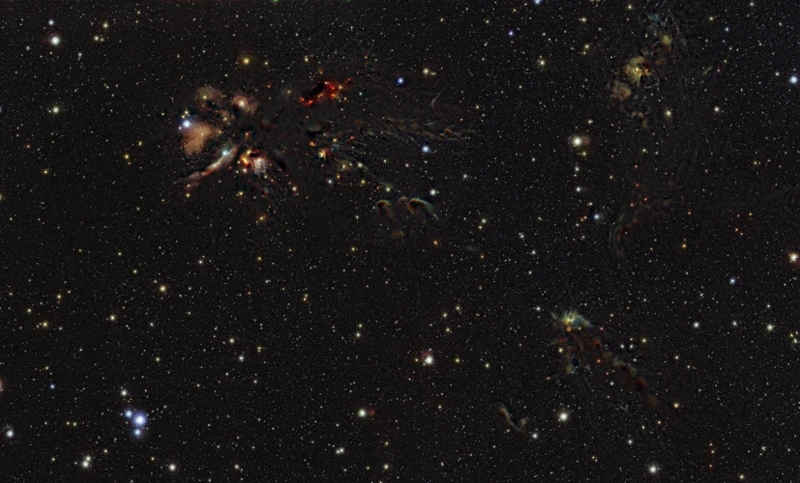
Scientific exploration has shed light on the fascinating aspects of the Ophiuchus constellation. Astronomers have conducted extensive studies to understand the position and characteristics of Ophiuchus in the night sky. Ophiuchus is situated along the celestial equator, making it visible from various regions of the Earth. Its proximity to the ecliptic path allows it to be part of the zodiac. Historical observations have revealed that Ophiuchus was recognized and documented by ancient civilizations, such as the Babylonians and the Egyptians. Ophiuchus holds a special place in the study of galaxies. Within this constellation, there are numerous galaxy clusters that have attracted the attention of scientists. The Ophiuchus galaxy cluster, also known as Abell 2218, is particularly notable for its gravitational lensing effects. It acts as a cosmic lens, magnifying and distorting the light from distant galaxies behind it. This phenomenon has greatly contributed to our understanding of the universe and has opened up new avenues of research in cosmology. The scientific exploration of Ophiuchus continues to unravel its mysteries and contribute to our understanding of the cosmos. To learn more about the connection between Ophiuchus and galaxies, click here: Ophiuchus and Galaxies.
5.1 Ophiuchus in Astronomy
Ophiuchus plays an important role in the field of astronomy, offering astronomers a wealth of opportunities for observation and study. From a scientific perspective, Ophiuchus is classified as a constellation located near the celestial equator. It lies between the constellations of Hercules and Serpens, and is often depicted as a figure holding a snake. Ophiuchus is notable for containing many fascinating stars, clusters, and nebulae within its boundaries. One prominent feature is the Ophiuchus Cluster, a massive galaxy cluster located about 390 million light-years away. This cluster is home to countless galaxies, each containing billions of stars. The Ophiuchus constellation also contains several notable binary star systems, where two stars orbit around a common center of mass. These systems provide valuable insights into stellar evolution and dynamics. Additionally, Ophiuchus is home to the Barnard 68 (B68) dark nebula, a dense cloud of interstellar dust that obscures the light of stars behind it. This makes B68 an intriguing subject of study for astronomers interested in the formation of stars and planetary systems. By examining these celestial objects and phenomena within the constellation of Ophiuchus, astronomers gain deeper insights into the intricacies of the universe and expand our knowledge of the cosmos.
5.2 Ophiuchus and Galaxies
Ophiuchus, the serpent bearer, not only has intriguing mythological and astrological significance but also plays a vital role in the field of astronomy, particularly in the study of galaxies. One of the most fascinating aspects of Ophiuchus is its location within the Milky Way, placing it in proximity to a multitude of galaxies. Ophiuchus lies along the galactic plane, a region abundant with cosmic matter and stellar activity. This cosmic neighborhood offers astronomers a unique vantage point to observe and study various types of galaxies, including spiral galaxies, elliptical galaxies, and even dwarf galaxies. The interaction between Ophiuchus and these galaxies provides valuable insights into the formation, evolution, and dynamics of galactic systems. Additionally, Ophiuchus hosts a number of galaxy clusters, such as the famous Ophiuchus Supercluster, consisting of several galaxy groups and clusters spanning vast distances. These galaxy clusters serve as a celestial laboratory for astronomers to investigate the complex interplay between dark matter, hot gas, and galaxies within massive structures. By studying Ophiuchus and its interactions with galaxies, scientists can deepen their understanding of the cosmos and unravel the mysteries of our universe.
Misconceptions and Controversies
Misconceptions and controversies surrounding the Ophiuchus constellation have sparked debate among astronomers, astrologers, and enthusiasts alike. One of the major misconceptions is the idea that Ophiuchus is the “13th zodiac sign,” disrupting the traditional twelve-sign zodiac system. This misconception stems from the fact that the ecliptic, the apparent path of the Sun against the celestial sphere, passes through Ophiuchus as well. However, it is important to note that the zodiac signs are based on the positions of constellations relative to the Sun at specific times of the year. The zodiac system used in Western astrology does not include Ophiuchus as a separate sign. Another controversy arises from the differing interpretations of Ophiuchus as a zodiac sign and its impact on individuals’ birth charts. Some believe that those born under the influence of Ophiuchus possess unique traits and characteristics not associated with any other zodiac sign. However, this is not widely accepted or recognized in mainstream astrology practices. It is essential to differentiate between the scientific understanding of constellations and their symbolic interpretations within astrological systems. These misconceptions and controversies continue to spark discussions and debates within the fields of astronomy and astrology, as individuals seek to understand the true nature and significance of the enigmatic Ophiuchus constellation. To learn more about the Ophiuchus Zodiac controversy, click here: Ophiuchus and its Cultural Impact.
6.1 The Ophiuchus Zodiac Controversy
The Ophiuchus Zodiac Controversy is a topic that has sparked heated debates and discussions among astrologers and enthusiasts. The controversy stems from the inclusion of Ophiuchus as the thirteenth zodiac sign, which challenges the traditional twelve-sign zodiac system. Ophiuchus, represented by the Serpent Bearer, is said to exhibit unique personality traits and characteristics that differ from those associated with the other zodiac signs. Proponents of including Ophiuchus argue that its addition provides a more accurate representation of the celestial alignment and individual traits. However, traditional astrologers argue that the established zodiac system has been in place for centuries and altering it would disrupt the foundations of astrology. This controversy also raises questions about the accuracy and validity of astrology as a whole. While the inclusion of Ophiuchus has gained popularity in recent years, with some people identifying as Ophiuchus individuals, the debate continues to divide the astrological community. It is important to note that the Ophiuchus Zodiac Controversy is not universally accepted, and opinions on the matter vary among astrologers and astrology enthusiasts. To learn more about the cultural impact of Ophiuchus and its role in modern pop culture, click here: Ophiuchus Zodiac: Cultural Impact and Pop Culture.
6.2 Modern Rulings and Opinions
In recent years, the Ophiuchus constellation has sparked debates and controversies in the astrological community, leading to various modern rulings and opinions. While traditional Western astrology recognizes the twelve zodiac signs, some astrologers argue that Ophiuchus should be included as the thirteenth sign. This notion stems from the fact that the sun passes through the constellation for about eighteen days each year, overlapping with the traditional zodiac dates. Proponents of the Ophiuchus zodiac believe that individuals born during this period possess unique traits and characteristics, different from those assigned to the other zodiac signs. However, critics argue that incorporating Ophiuchus disrupts the traditional astrological system and undermines the centuries-old interpretations associated with the twelve signs. They believe that including Ophiuchus would be confusing and unnecessary. Despite these differing viewpoints, it is important to note that the majority of mainstream astrologers and horoscope publications continue to adhere to the traditional twelve zodiac signs, disregarding Ophiuchus. The Ophiuchus controversy remains a subject of interest and discussion among astrology enthusiasts. To explore more about the modern rulings and opinions regarding Ophiuchus, click here: The Ophiuchus Zodiac: Cultural Impact and Modern Rulings.
Conclusion
In conclusion, the Ophiuchus constellation holds a significant place in both historical mythology and modern culture. From its mythological origins as the Serpent Bearer to its addition to the zodiac, Ophiuchus has captured the fascination of people around the world. Astronomically, its unique position and characteristics have made it a subject of study and observation. Astrologically, Ophiuchus has sparked debates and interpretations, leading to personality traits and characteristics associated with those born under this sign. Culturally, Ophiuchus has influenced various societies and artistic representations, showcasing its enduring impact. Scientific exploration has further enhanced our knowledge of Ophiuchus, particularly its role in the study of galaxies and astronomical phenomena. While misconceptions and controversies exist surrounding Ophiuchus, its place in our collective understanding of the cosmos remains intriguing. In conclusion, the Ophiuchus constellation is a celestial wonder that continues to inspire and captivate, inviting us to explore the depths of our universe with curiosity and awe.
Frequently Asked Questions
1. What does the Ophiuchus constellation represent in Greek mythology?
In Greek mythology, the Ophiuchus constellation represents Asclepius, the god of medicine and healing. He was known for his extraordinary abilities to cure illnesses and even revive the dead.
2. Is Ophiuchus a part of the zodiac?
Ophiuchus is not traditionally considered part of the zodiac. However, in recent years, there has been debate about its inclusion as a 13th zodiac sign.
3. What are the personality traits associated with Ophiuchus?
According to some astrologers, those born under the Ophiuchus zodiac sign are said to possess traits such as wisdom, intuition, healing abilities, and a strong desire for knowledge.
4. How does Ophiuchus relate to modern pop culture?
Ophiuchus has made its way into modern pop culture through various mediums such as literature, music, and art. It has been referenced in fantasy novels, featured in album artwork, and even incorporated into tattoo designs.
5. Can Ophiuchus be observed in the night sky?
Yes, Ophiuchus can be observed in the night sky. It is located between the constellations of Scorpius and Sagittarius and is best visible in the summer months in the Northern Hemisphere.
6. How does Ophiuchus relate to astronomy?
Ophiuchus is significant in astronomy as it lies along the ecliptic, the apparent path of the Sun across the sky. It is also home to numerous interesting celestial objects, including star clusters and distant galaxies.
7. Are there any famous artworks depicting Ophiuchus?
Yes, there are several famous artworks that depict Ophiuchus. One notable example is the Farnese Atlas, a Roman sculpture that shows Atlas holding the celestial sphere with Ophiuchus clearly visible.
8. What is the controversy surrounding Ophiuchus and the zodiac?
The controversy surrounding Ophiuchus and the zodiac stems from the debate about whether it should be recognized as a 13th zodiac sign, potentially shifting the dates and characteristics of the existing signs.
9. How does Ophiuchus relate to other cultures?
Ophiuchus is not only prominent in Greek mythology but also appears in other cultures such as Babylonian and Egyptian. These cultures have their own interpretations and stories associated with this constellation.
10. Is Ophiuchus a well-known constellation?
While not as widely recognized as some other constellations, Ophiuchus holds a special place in astronomy and astrology circles. Its unique position and mythical origins make it a fascinating subject of study for many enthusiasts.

